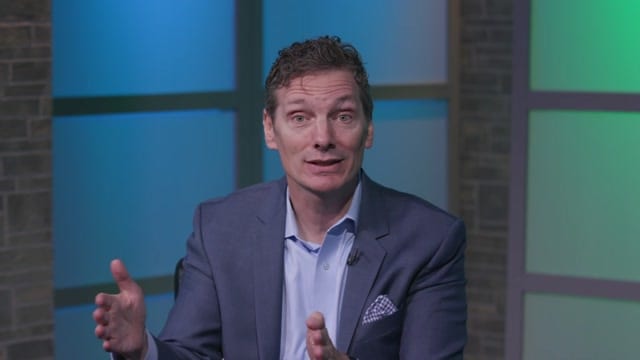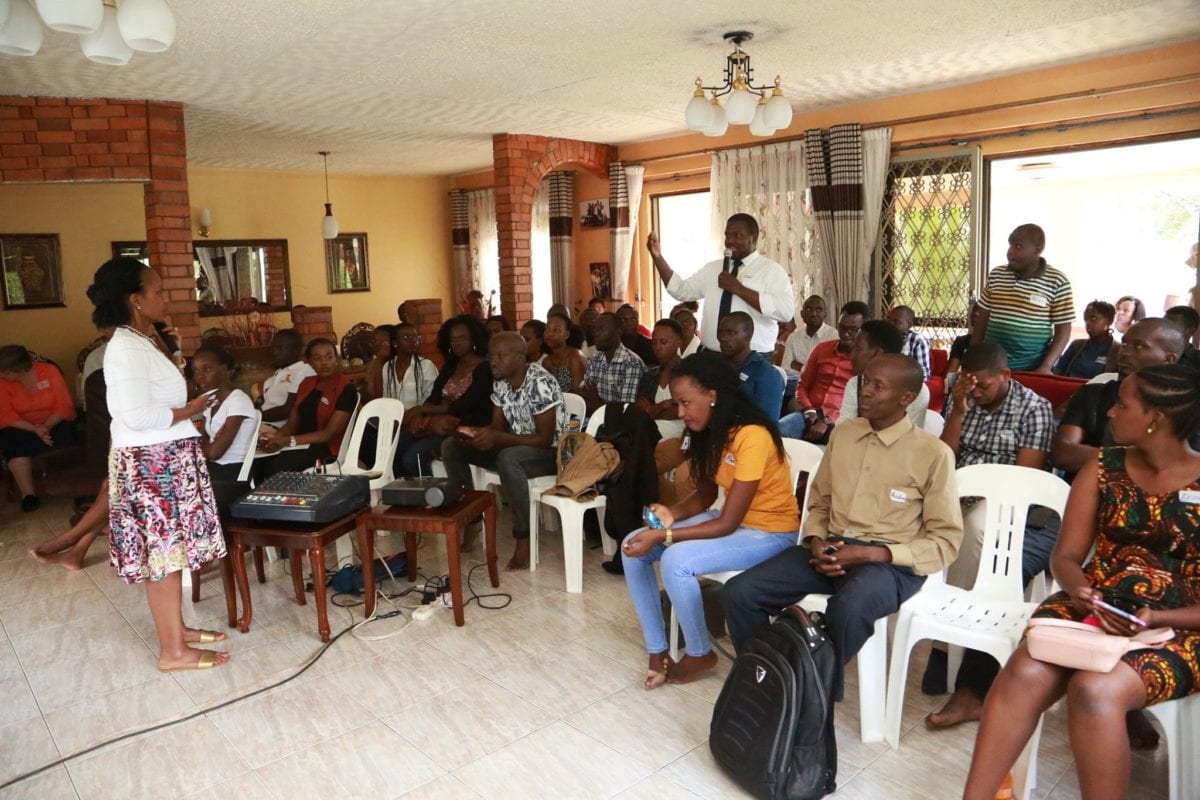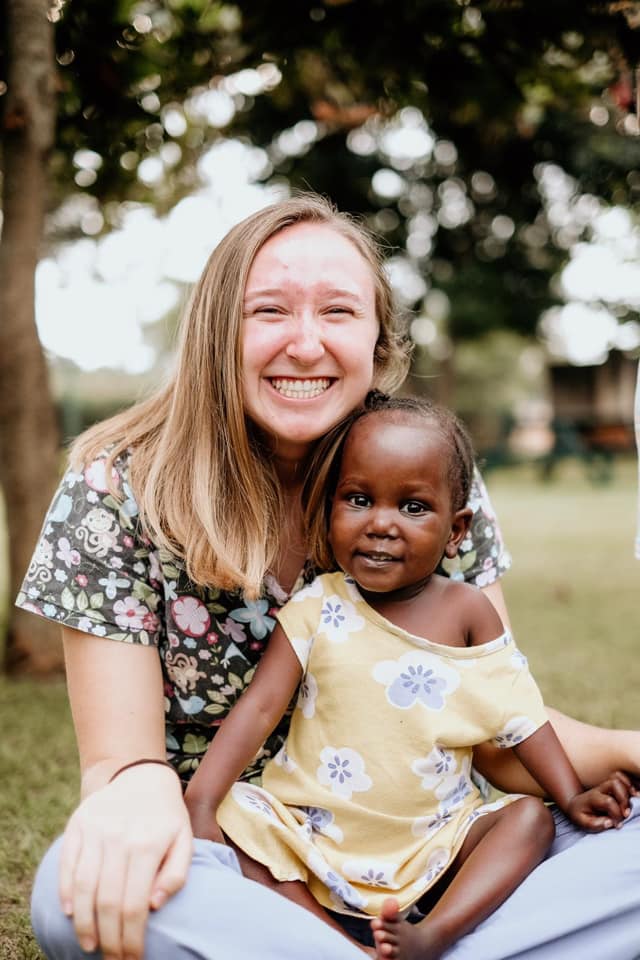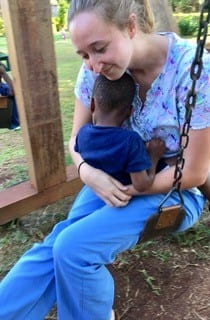
Jeff Henderson lays out the reasons why margin is critical for leaders and the way he builds margin into his schedule.

Jeff Henderson lays out the reasons why margin is critical for leaders and the way he builds margin into his schedule.

In 2017, the GLS committee in Kenya decided to start an initiative to get educators involved and launched an experience for teachers. They were so moved, that the school administration requested leadership mentorship for their students.
One hundred twenty of the top performing students then met for weekly meetings, and bi-monthly GLS sessions and discussion. The impact was compounded. These students then initiated three projects out of inspiration from the GLS to impact their communities.
Ultimately, this initiative has given birth to the Kajiado Youth Global Leadership Summit every July.
By the year 2020, the Kenyan team plans to be in eight schools doing training in leadership. And the county government has agreed to offer one-week internships for select students going through the program. As they continue, the team plans to invite more organizations to participate.

Jason Dorsey says you should view generational differences as a clues to increase understanding, not as rigid boxes into which people fit.

Every Tuesday and Thursday morning at 8:30 am CST, our staff gathers together to pray for our partners across the globe.
Please join us in prayer as we lift up the international Summit events happening this weekend. Pray for God’s anointing on every detail and that those who attend would leave feeling equipped, inspired and encouraged to lead the change they long for in their communities.
And if you have a prayer request, please share it with us in the comments. We would be honored to pray with you!
Hanoi, Vietnam
Jinja, Uganda
Yangon, Myanmar
Mumbai, India
Pune, India
Manjung, Malaysia
Ogun State, Nigeria

That is a phrase many of us will take away from GLS19.
When Summit Champion Craig Groeschel introduced this phrase, leaders around the world nodded in silent agreement.
At the end of the day, GETMO is a valuation of resources required on a project compared to the return on the investment of those resources. Essentially, it’s a cost/benefit analysis, helping leaders determine how much time and energy ought to be invested in certain activities and initiatives in order to maximize their overall impact.
In our organization, we all looked at each other and said “GEG!” GEG is a term we started using in college, standing for “Good Enough to Graduate.” Same concept. Through this framework, something of significant impact will receive significant attention, where something of only ancillary benefit will only receive minimal attention—not because it doesn’t matter at all, but because it actually doesn’t matter as much as other things you could invest yourself into.
This is tremendously beneficial to leaders. One of the toughest things about leadership is maintaining focus. A leader’s attention is pulled in many directions. Leaders have to constantly determine where to invest the best of themselves. This is true of a parent, a coach, a manager or a CEO. Our most precious resource is our engagement (our time, attention and energy), so to steward our lives for maximum impact, we’ve got to invest carefully the very best of ourselves into what matters most.
GETMO is a valuation of resources required on a project compared to the return on the investment of those resources.
It starts with three basic questions:
To get started, leaders need to decide about what matters most. This long-range envisioning process requires some extended time to look forward and dream about what’s possible. From that blue-sky space of imagining hypothetical possibilities, some concrete goals need to be established. These long-range goals then become the true-north compass that guides our leadership day-to-day. Without it, we can’t apply GETMO, because we haven’t actually defined the priorities moving forward toward which ones we’re seeking to move.
Where the first question is one of prioritizing, the second is one of planning. In our organization for example, managers will review each employee’s weekly calendar to ensure they are giving twice their attention to their top priorities as compared to other secondary priorities. This proactive structuring—which ultimately plays out in your scheduling—also helps the GETMO process because it contextualizes the myriad of things you have to get done. Without this step in the process, leaders can drown in the minutiae of insignificant activity.
Maximizing your impact is more than saying, “GETMO.” It’s a commitment to giving your very best to what matters most.
This is where personal discipline comes in. At this stage in the process, leaders simply need to have the capacity to say no. Or to say stop. Every leader can have a clear picture of what they most want to accomplish in a bigger-picture way, and they can structure those priorities into a regular rhythm and work routine, but if you can’t say no to secondary opportunities, then you’ve negated the potential of the entire process.
Consider the areas where you lead.
There’s nothing more freeing than being able to have the clear vision, supportive structure and personal resolve to steward your life for maximum impact. Maximizing your impact is more than saying, “GETMO.” It’s a commitment to giving your very best to what matters most.
And when you “GETMO,” you will make the great impact that God intended for your one and only life!
GLS Podcast > Episode 057: Craig Groeschel: How to Bend the Curve
GLS19 Session Notes > Craig Groeschel: Bend the Curve

I started attending The Global Leadership Summit in middle school. I loved hearing stories about what the Lord was doing around the world. It was incredible to look around and see people of all cultures, from all around the world, coming together in the same room to grow together in leadership. Our God is the same everywhere, so the GLS seems to be a beautiful picture of the Church joining together for worship.
It was during worship at the Summit when I was in high school that I heard the Lord whisper to me, I want you to serve in Africa.
It was during worship at the Summit when I was in high school that I heard the Lord whisper to me, I want you to serve in Africa. My eyes began to water. I felt so confident that this was exactly what the Lord wanted me to do—I had found my calling, my purpose. However, right after that, I began doubting God’s voice and didn’t know if He had actually spoken to me. I didn’t mention what happened at that Summit to anyone for a while.
A few years later, I went on a serving trip to Zambia with my church’s high school ministry. And as I went into college, the Lord continued to put Africa on my heart. So, I told God that if He wanted to send me to Africa again, He needed to show me where.
 Then one day in February 2018, God opened my eyes. It was like a light bulb went on, highlighting Uganda. It turns out God had been revealing Uganda to me in many ways through books, friends and at church.
Then one day in February 2018, God opened my eyes. It was like a light bulb went on, highlighting Uganda. It turns out God had been revealing Uganda to me in many ways through books, friends and at church.
The Summit pushed me to pursue big things, knowing that God truly works miracles and that nothing is possible alone; it’s all possible through Him. If our God is the same God who split the Red Sea and healed the blind, then why don’t I think that He can do big things? It’s pretty humbling to think of all that God is capable of.
The dream God put on my heart was to teach or work with a nonprofit in Uganda. I felt like I loved Uganda before I had ever stepped foot in the country! Logically, I know that doesn’t make sense, which is why I felt like I needed to take a first step to go. So, in May 2019, I traveled to Uganda for the first time to serve children in an orphanage called Amani Baby Cottage. Before I got there, I imagined loving people at all times, eating the food like I was a local, learning Luganda (a local language) quickly and never being tired. This was so far from the truth.
I was tired often, the food tasted different, and I didn’t always understand the culture. During the first couple weeks, I was fumbling my way through my days. I experienced culture shock and homesickness.

Then God helped me realize I had idolized missions. I was so humbled. I didn’t want to idolize an experience; rather, I wanted to seek my God who had sent me there. God showed me that missions isn’t glamorous. It’s hard, tiring and confusing, yet so fulfilling.
God taught me about how intricately He created Uganda. He created the culture, the languages, the food, the people and the sights. And my heart began to soften. I began to be more present with the kids I was serving. When I left, I cried heavy, sad tears because I loved these kids like my own. They greatly impacted my heart.
I’m grateful for a God who humbles and calls us to repentance. I’m grateful that God brought missions off a pedestal right away. I am so humbled by the idea that God uses us wherever we are. God can work through anyone–young or old.
I learned a lot this summer about the value in those who are younger than myself, such as the faithful children at Amani Baby Cottage. I think that should empower me as a young leader to have a mustard-seed faith and seek the Lord more deeply.
My dream is still being formed. God continues to show me His love for education, orphans and justice. I don’t know what it all looks like yet, and that’s okay—I feel called to continue my college education and be obedient. I plan to keep saying yes to God even if it doesn’t look like the world’s standard for the “ideal life.” It’s scary, but I am confident that God knows what He’s doing.

Jo Saxton outlines some challenges to building your tribe and gives practical advice to help you develop the key relationships that fuel your leadership.

When you need to say no, Jia Jiang explains that alternatives and concessions can soften the blow and save your relationships.

Across Uganda, there is a great need for leadership development based on biblical values. Leaders who lack integrity are celebrated by the majority of our population. The Christians who really want to do the right thing face a lot of opposition and are not seen in very good light. While the younger generation, who constitute 78 percent of the population, have very few role models, so they swim against the tide until they just give up and join in.
James Imani Amanyire is one of the young men who has attended The Global Leadership Summit in Uganda. Through the Summit, he was impacted to influence and encourage youth struggling with addiction, and the ripple effect is already being witnessed in the lives that he’s touched.
One of the speakers who touched me was John Maxwell. He spoke about intentional living. I have a history of addiction. I was once seriously impacted by addiction for almost 14 years, and this began at a very young age. But by God’s grace, I managed to overcome. For the last two and a half years, I have been sober. God touched my heart about joining the cause to help my fellow youth and those people who are struggling with addiction-related problems.
By profession, I was in software engineering, but I feel my calling is in social work. I had this passion to reach out to youth and help them to recover from these addiction-related problems. So, when John Maxwell spoke about intentional living, I decided to do something. It reemphasized my purpose.
I began an organization [Beautifier Community Youth Empowerment], got it registered and through this organization, I have tried to reach out to some youth. Currently I have helped rehabilitate two youth. One was struggling with heroin addiction; I got him from the street, took him back to his home and he is currently three weeks sober. The parents are all very excited—they can’t believe this. One other has been struggling with cocaine and alcohol addiction; he is also now sober and he’s one of the people I am working with currently to push for this project.
Ampaire Felix is one of the young men James has had an impact on, and as a result, he’s used his influence to express his concern to key influencers in the country.
I am part of Beautifier Community Youth Empowerment. James influenced me a lot. He was the first one [I knew] who transformed and quit the addiction life. With the positive life he started living, there’s a way it challenged me—I would see what I want to be but didn’t think I could do it. But through the love, care, concern and the advice, he helped me in my life transformation. We, as Beautifier Community Youth, are focusing on empowering people, helping the youth who don’t know the dangers of alcohol and addictions. We help them to know these dangers and avoid them. And for those who are addicted, we want to help them to know where it leads.
I also intentionally decided to address the issue of cheap alcohol in the market, and the Indian tobacco, which is very cheap and destroying youth. It’s like a drug sold legally on the shelves. So, I intentionally spoke about it, and I was invited to express myself with key influencers in the country. I believe this has helped me a lot to bring positive change in my community.

I am a raging perfectionist. I love the sight of all those cleanly dotted i’s and crossed t’s. And while the subtle font difference between Arial and Arial Narrow can mean the world to me—I do understand that an obsession with detail can gobble up my own WhiteSpace and that of my colleagues.
Perhaps you are surrounded by those, who like me, dabble in the controlling arts. And if you are, it’s likely you’ve been foiled in your attempts to talk them out of their perfectionistic trance. It’s hard to do with behavior that is hard wired. But if you want to protect your own WhiteSpace and that of your team you must shore up your reserves and continue to try. The fallout from unbridled perfectionism around you is not a small weight to bear.
Perhaps begin with some empathy. The folks around you who draw plans before they make a peanut butter and jelly sandwich have reason, albeit somewhat skewed, for their behavior and their choices. Typically, perfectionists are driven by four main motives; need for control, the fun and joy of perfecting, habit and showing off. They are doing their best to become comfortable and successful- but they can’t see where they waste time. If only they could.
Research shows that perfectionists experience 25% more stress at work and are 40% less engaged than their mellower counter parts, and that increased stress and lower engagement has serious effects on profitability, customer service, all in the name of one perfectly formatted spreadsheet.
Following are some ways you can gently guide them towards moderation. Be cautious in a peer-to-peer relationship that you are not overstepping. If you have a kind of intimacy that opens the door to direct feedback, walk on thorough. If not, keep your comments general to all and hope that the right person hears the message.
Research shows that perfectionists experience 25% more stress at work and are 40% less engaged.
Let’s try something for a second: every month you receive a paycheck of $2400.00 (bear with me here). Of that $2400, $400 goes into savings, $800 for housing, $300 for transportation, $500 for food, and $200 for medical costs, leaving you with $200 to use on entertainment or anything else you so choose. We understand budgeting our money, but let’s take that mindset and apply it to our stores of excellence. Chat with your team and colleagues about excellence as a finite, budget-able resource and decide which projects deserve it and which can be “good enough.”
Streamlining meeting notes? Good enough—unless, that is, you’re sending those notes straight to your CEO. Building a sales pitch for a prospective client? Sure, go ahead and spend some of those extra resources. Spouse or partner mismatch your black socks with your slightly blacker socks? Probably not worth the effort.
While determining when “Good Enough” is good enough, it’s important to understand that task’s values vary for everyone involved; what’s low-value to you may be high-value to someone else. Be sure to clearly communicate your expectations to those around you, and that you appropriately understand theirs.
Perfectionists commonly have a sort of excellence color blindness. They can’t see the difference between tasks where it’s worth going the extra mile, and small to-do’s that could easily go in the “Good Enough” category. Help them see better by having spotlight conversations – explicit conversations that highlight projects worth perfecting.
Working in groups of three is always an easy way for the brain to organize. Show your team or colleague the three top items on this week’s or this month’s to-do list where you want them to knock it out of the park. If they begin to deliver other items with a parallel level of perfection, gently shine that spotlight back on your top three. Like any new habit you may need to reinforce this framework several times.
While determining when “Good Enough” is good enough, it’s important to understand that task’s values vary for everyone involved.
If you’re one of the lucky “Type B” individuals who naturally gravitate towards “Good Enough,” share your perspective with your coworkers. Talk through your meeting points instead of building a complicated deck. Show a “Good Enough” agenda that’s clear, but not over-burdened. In our ever-grinding culture many convince themselves that everything needs to be pristine and seamless.
A voice of cool reason can go a long way toward breaking that trend.
This article originally appeared on LinkedIn here.
“We welcome and encourage comments on this site. There may be some instances where comments will need to be edited or removed, such as:
If you have any questions on the commenting policy, please let us know at heretoserve@globalleadership.org”
Recent Comments